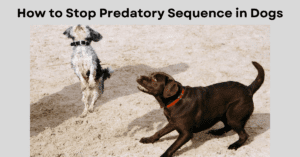Introduction
Leash biting is a common behavior issue that many puppy owners face, resulting from natural curiosity and playfulness. If unaddressed, it can pose safety risks; learn how to stop puppy from biting leash.
One of the primary reasons puppies bite the leash is because it feels strange and restrictive to them. Just like humans adjusting to wearing unfamiliar equipment, puppies need time to get used to the sensation of being on a leash. Additionally, the opposition reflex, a natural instinct in animals to pull away from constraints, can also trigger leash biting behavior.
Understanding Puppy Leash Biting
Training puppies to walk on a leash can be quite the challenge, as the concept of being tethered is new and somewhat unnatural for them. Similar to how we struggle to navigate with cumbersome ski gear, dogs need time and patience to adapt to the constraints of a leash. Moreover, their natural opposition reflex prompts them to resist restraint, which can result in leash biting tendencies. It’s important for owners to address this behavior early on through consistent training techniques and positive reinforcement.
Proactive Training Approach
Addressing leash biting in puppies requires proactive prevention measures, including desensitizing your puppy to the leash. Gradually introduce it to them positively to stop puppy from biting leash.
Start by leaving the leash laying on the ground for your puppy to investigate and smell. Next, attach the leash to your puppy’s collar for brief periods while supervised, gradually increasing the duration as they become more comfortable. It’s important to provide plenty of praise and treats when the puppy shows interest in or interacts positively with the leash.

Techniques for Introducing the Leash
Start by showing your puppy the leash and offering treats to create a positive association. Gradually increase exposure to the leash, rewarding calm behavior. Utilize techniques like the Mississippi game to build confidence and comfort with the leash.
The Tether Technique
The tether technique is a valuable tool for keeping an eye on your puppy and preventing accidents in the house. This method involves attaching a leash to your dog and securing it to yourself or another stable object. While using this technique, it’s important to remember that puppies need breaks too. Don’t keep them tethered for too long, as it can lead to discomfort and stress.
Make sure to supervise your puppy closely while they are tethered, as they may try to chew or tug on the leash. It’s also crucial to provide your puppy with enough space and freedom during off-leash periods, allowing them time to play, explore, and exercise. The key is finding a balance between monitoring and giving them room to move freely.
Preventing Leash Biting
When applying a leash to your puppy, it’s important to use efficient movements as this can help prevent biting incidents. Distraction techniques, such as using lick mats or treats, can be beneficial in redirecting the puppy’s attention away from biting. Additionally, practicing leash application with another person can help manage the puppy’s focus and reduce the likelihood of biting.
By incorporating these techniques into the training process, you are effectively teaching your puppy positive behaviors and reinforcing good leash manners. Consistent practice will also contribute to building trust and a positive association with the leash, making future walks more enjoyable for both you and your puppy.
Additional Tips for Success
When training your puppy, it’s important to be mindful of how much you handle them and to avoid tethering them to inanimate objects, as this can cause stress and discomfort for your puppy. Choose appropriate times for training sessions when your puppy is not overly tired or distracted. It’s also helpful to offer a toy for chewing while putting on their leash, as this can redirect their attention and make the process more enjoyable for them.
Also, assess the environment before going on a walk to ensure that it’s not too overstimulating for your puppy. Avoid busy streets or crowded areas if your puppy is easily overwhelmed. By being mindful of these factors, you can create a more positive and successful training experience for both you and your puppy.
Final Thoughts
Training your puppy to overcome leash biting challenges can be achieved by incorporating the following eight tips into your routine. Patience and consistency are key as you work with your puppy. Seek additional assistance if needed, such as from a professional dog trainer or behaviorist. With dedication and positive reinforcement, you can build a strong foundation for pleasant walks free of leash biting frustrations. Remember that each puppy is unique, so tailor these tips to suit your puppy’s individual needs. Consistent training will help your puppy understand that leash biting is not acceptable behavior. Stay calm and firm when addressing leash biting issues to set clear boundaries for your puppy. By following these tips with commitment, you can enjoy stress-free walks with your well-behaved furry companion.




